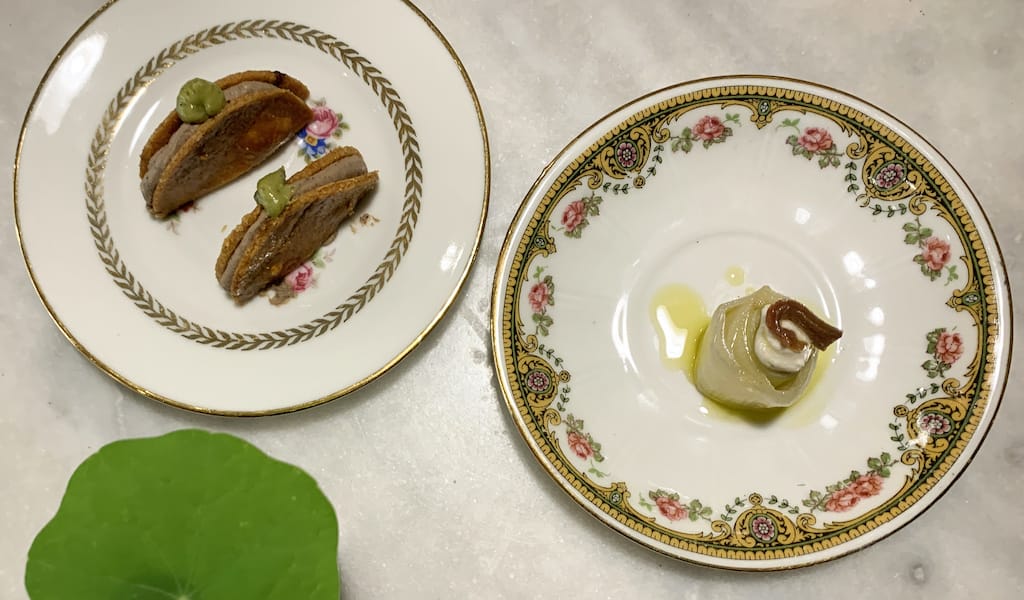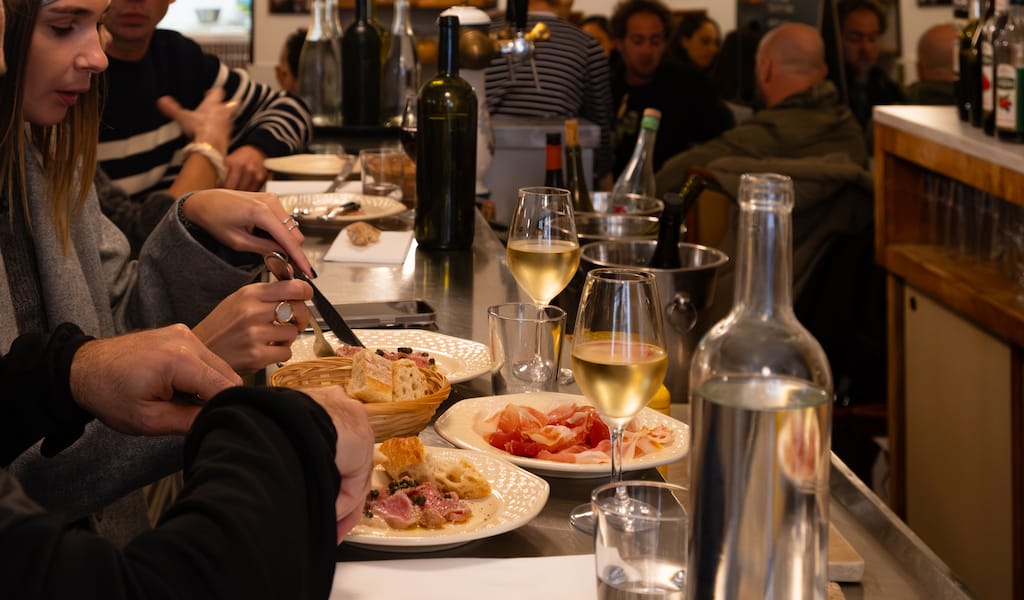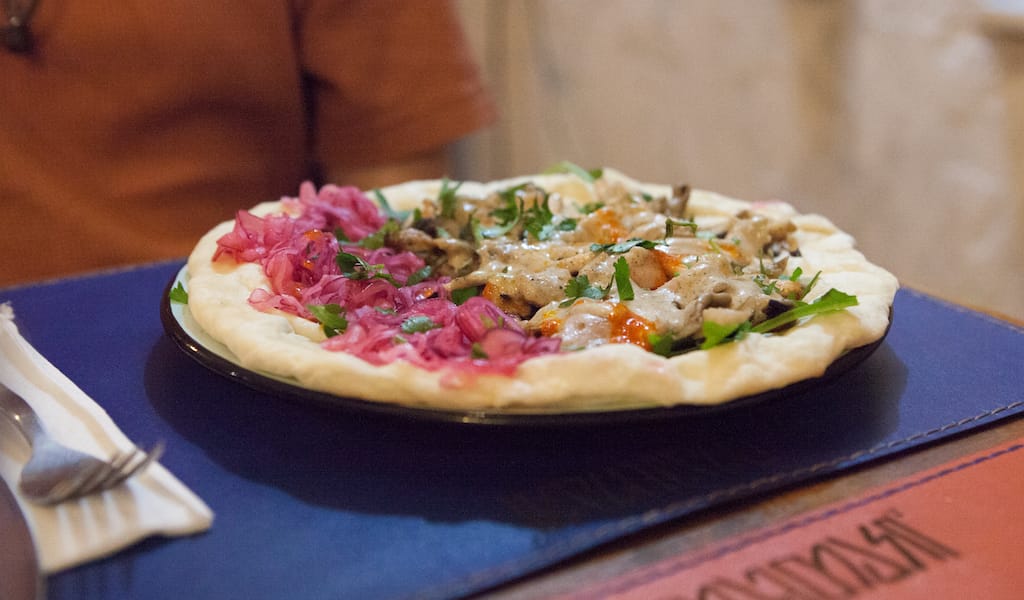“It is a recipe similar to a meat stew that originally was made with game or fish. We do it with beef cheek – a very traditional ingredient now in Catalunya, but which in those days was not so frequently used. It goes with several herbs and spices like parsley, thyme and marjoram, plus cinnamon and clove, all cooked with lard and honey from the Sierra de Cádiz, made by Tania’s family.”
This, in words of the chef Marc Pérez, is a Sosenga, a medieval dish and the name of the restaurant he recently opened in the Gótic neighborhood with his partner in life and work, Tania Doblas. This medieval recipe is based on a sofrito (in old Catalan, “sosenga” means “sofrito”) from the first cookbook written in Catalan – by an unknown author – and one of the oldest in Europe: the Llibre del Sent Soví (1329). “We started to use this book to find roots and motives to build the fundaments of our project,” Marc explains. “What we did it was recover the recipe and update it.”
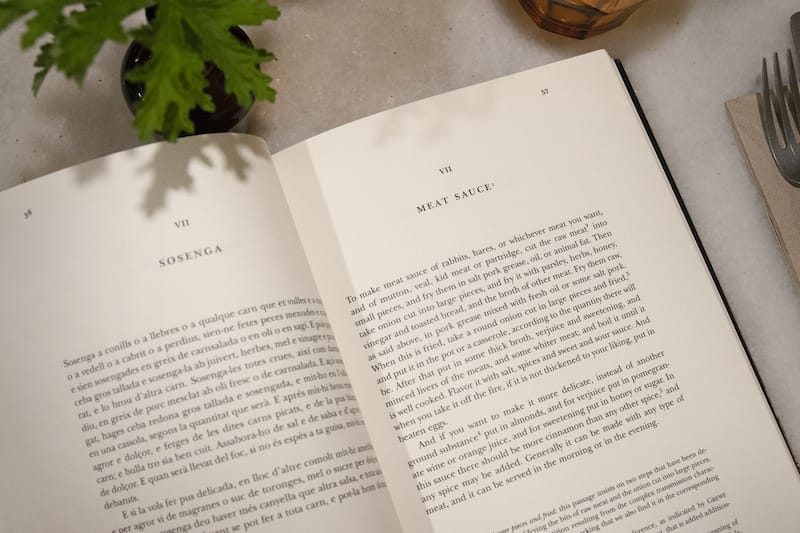 Marc Pérez arrived in these narrow alleys of Barcelona’s Ciutat Vella after studying haute cuisine and working under the command of great masters like Joel Robuchon, Carmen Ruscalleda and Carles Gaig. But Pérez’s experience has also been shaped by the sophisticated daily cuisine and the simple magic of Mediterranean products while cooking, managing and administrating in different Barcelona hotels and restaurants.
Marc Pérez arrived in these narrow alleys of Barcelona’s Ciutat Vella after studying haute cuisine and working under the command of great masters like Joel Robuchon, Carmen Ruscalleda and Carles Gaig. But Pérez’s experience has also been shaped by the sophisticated daily cuisine and the simple magic of Mediterranean products while cooking, managing and administrating in different Barcelona hotels and restaurants.
After meeting Doblas while working at Barcelona’s Almanac Hotel, the two started to conceptualize their next project together. They spotted a classic restaurant about to close in the very neighborhood where Marc’s family lives, the Gótic quarter of the Old City of Barcelona, and took it as a message from the universe: this is still your home. The old Mercé Vins, a wine bodega with two modest floors which once served as both the shop and the owners’ home, was closing its doors after forty years of service and the post-pandemic retirement of owner Mercè Boada. Like the sosenga recipe, this establishment with a centenarian soul was in need of new life, and inspired Pérez to recover and update it.
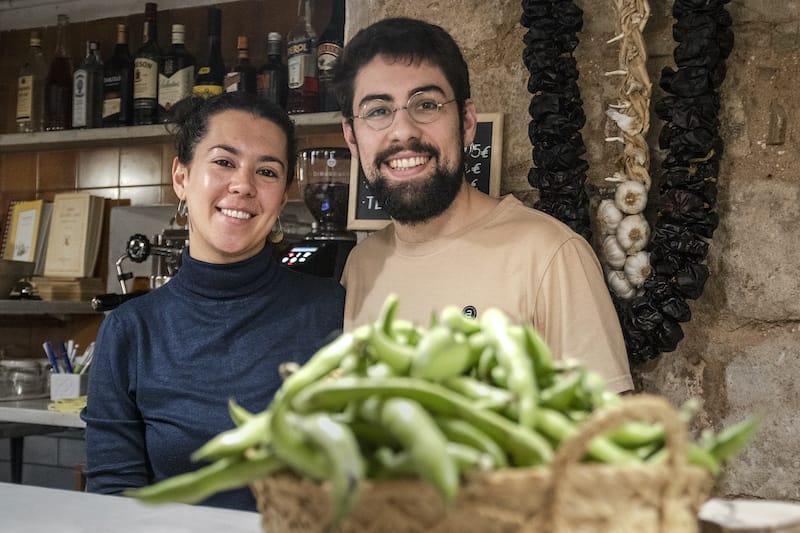
The result is La Sosenga, modern culinary candy wrapped in cute vintage paper, a fantastic contemporary addition to the Catalan culinary tradition. The restaurant offers very attractive daily lunch specials for less than twenty euros, in which you can choose from a seasonal selection of first and second dishes. The main dishes are preceded by two small, singular bites called “Aperitif” and “Snack,” respectively, both unexpectedly sophisticated tiny appetizers. The tapas to share (“Per compartir” on the menu) and more elaborate plates (“Platerets”) complete the offer during lunch and dinner. The tapas include all the classics, such as Sosenga’s special spiced patatas bravas, seasonal croquets or mussels marinated in escabeche. Everything comes with bread baked in-house and a selection of Spanish wines.
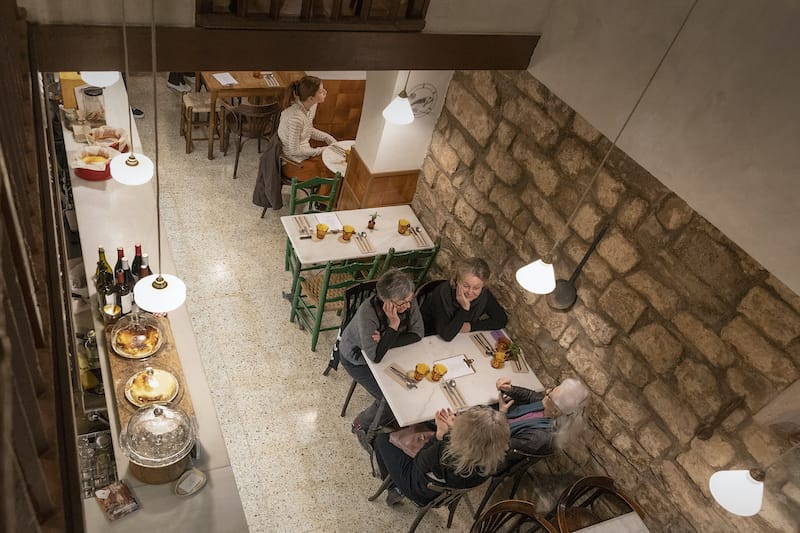
The Platerets section includes dishes like a confit cod with Idiazábal cheese or the traditional Catalan caneló (cannelloni), made with poularde chicken and béchamel. This is also where you’ll find the eponymous sosenga de vedella. With minimal changes to the original recipe, the dish is made with only ingredients used before Columbus journeyed to the Americas (no potatoes, tomato or capsicums) and highlights those very characteristic medieval sweet and sour flavors. A tender, succulent beef cheek seasoned with clove and cinnamon and browned in lard is later stewed in a fragrant, dense sauce made from a sofrito of onion with aromatic herbs, a bit of minced liver, vinegar and honey. The meat is served covered with sauce in the company of peeled orange slices that refresh and sweeten every bite. The combination of ingredients results in flavors that, surprisingly, taste perfectly modern. Mission accomplished here.
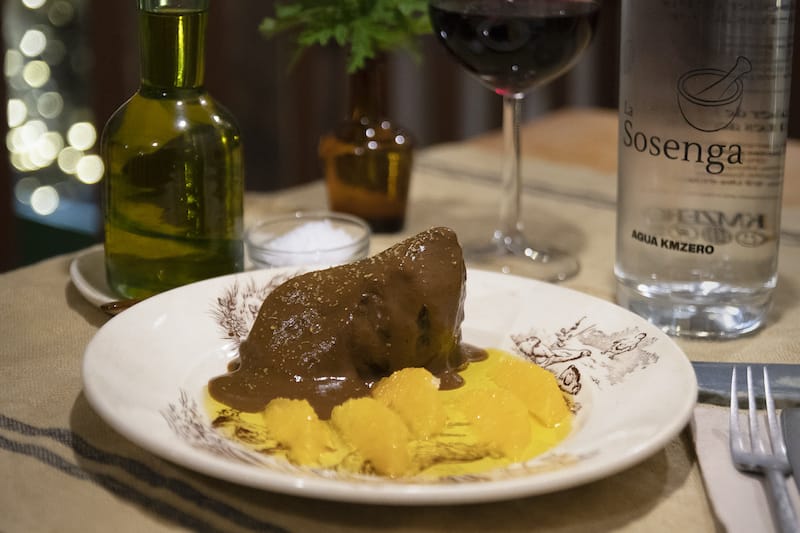
The cohesion of Catalan roots and the use of local ingredients is Pérez’s main motivation, but he keeps an eye toward new combinations or the addition of foreign ingredients – like the seasonal calçots (local spring onions) omelet with Mexican salsa tatemada. In this case, the the smoky sauce pairs perfectly with the grilled green onions to evoke the charcoal grills in the countryside where calçots are traditionally prepared.
For dessert, don’t miss the luscious house-made cheese cakes waiting temptingly on the counter. They are made in the Mediterranean style – very runny and creamy inside and without any crust. Marc developed his cheesecakes as a delivery item during the pandemic, and they’ve now become the special dessert of the house.
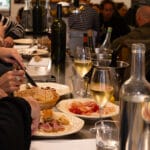 March 19, 2024 À Moro
March 19, 2024 À Moro
In a small dining room with Italian terrazzo floors, warm lighting, and earthy, […] Posted in Marseille March 15, 2024 Tamtaki
March 15, 2024 Tamtaki
The Vera district of Tbilisi is bursting with tempting food options, from traditional […] Posted in Tbilisi March 1, 2024 Pancholi-na
March 1, 2024 Pancholi-na
Last summer, when we first saw handmade posters on the street written in English and […] Posted in Tbilisi
Published on April 27, 2023
Related stories
March 19, 2024
MarseilleIn a small dining room with Italian terrazzo floors, warm lighting, and earthy, distressed walls, every table is occupied. There are regulars from the neighborhood, couples on a quiet afternoon date, a father and small son giggling over pasta, and colleagues sharing plates at a long table in the corner. We grab the only seats…
March 15, 2024
TbilisiThe Vera district of Tbilisi is bursting with tempting food options, from traditional Georgian feasts to cinnamon rolls and pizza. But there is nowhere like Tamtaki in the neighborhood – or anywhere else in Tbilisi, for that matter. Founded by chef Tamta Kikaleishvili and her mother, Katya Gegia, in 2020, the origin of the name…
March 1, 2024
Tbilisi | By Clément Girardot
TbilisiLast summer, when we first saw handmade posters on the street written in English and Georgian announcing the opening of a Japanese bakery, we were both bewildered and excited. On top of many local tone (traditional ovens), Tbilisi had French, German, Turkish and Lithuanian bakeries – but Japanese bread and pastries were unheard of. We…







































